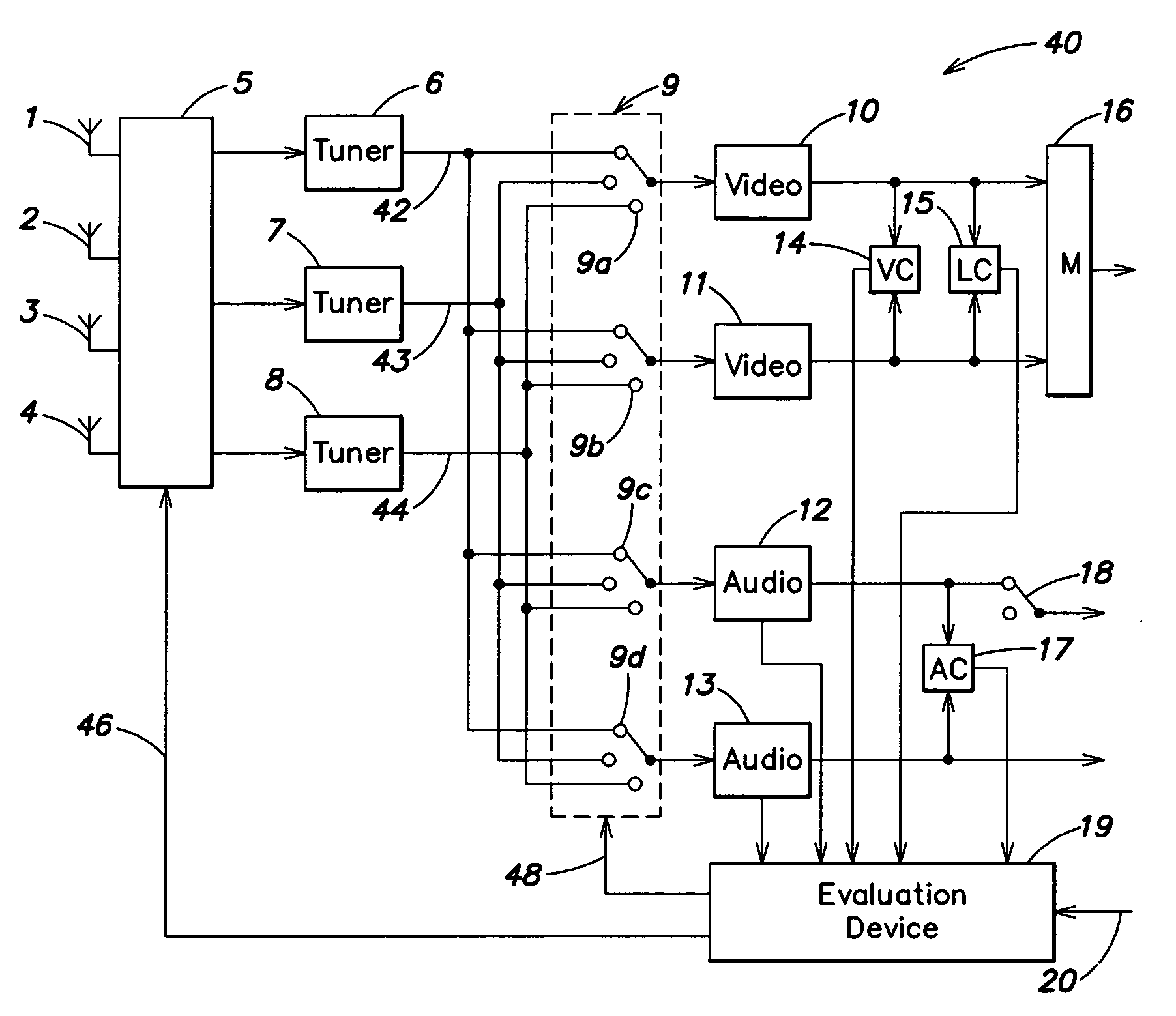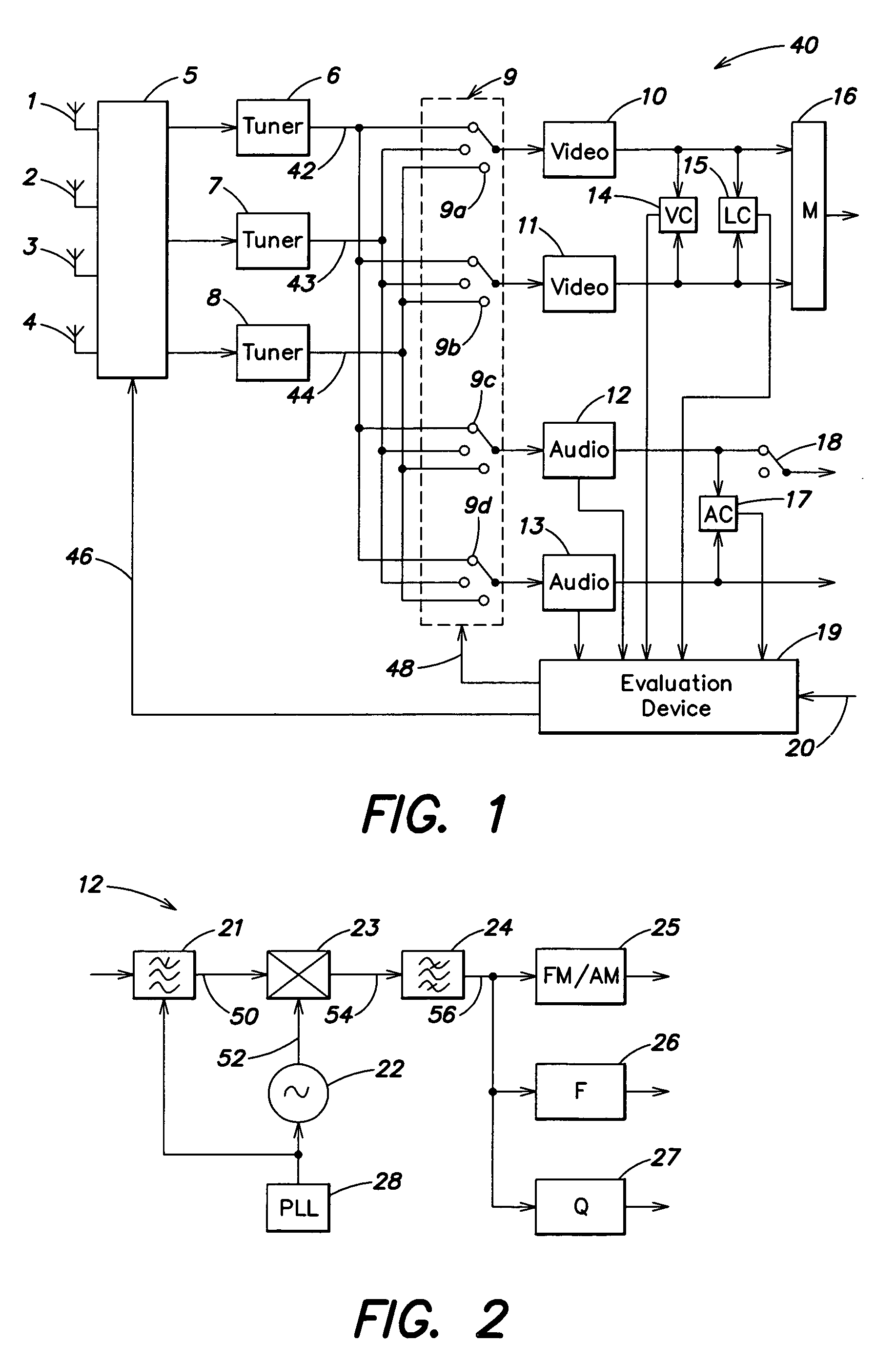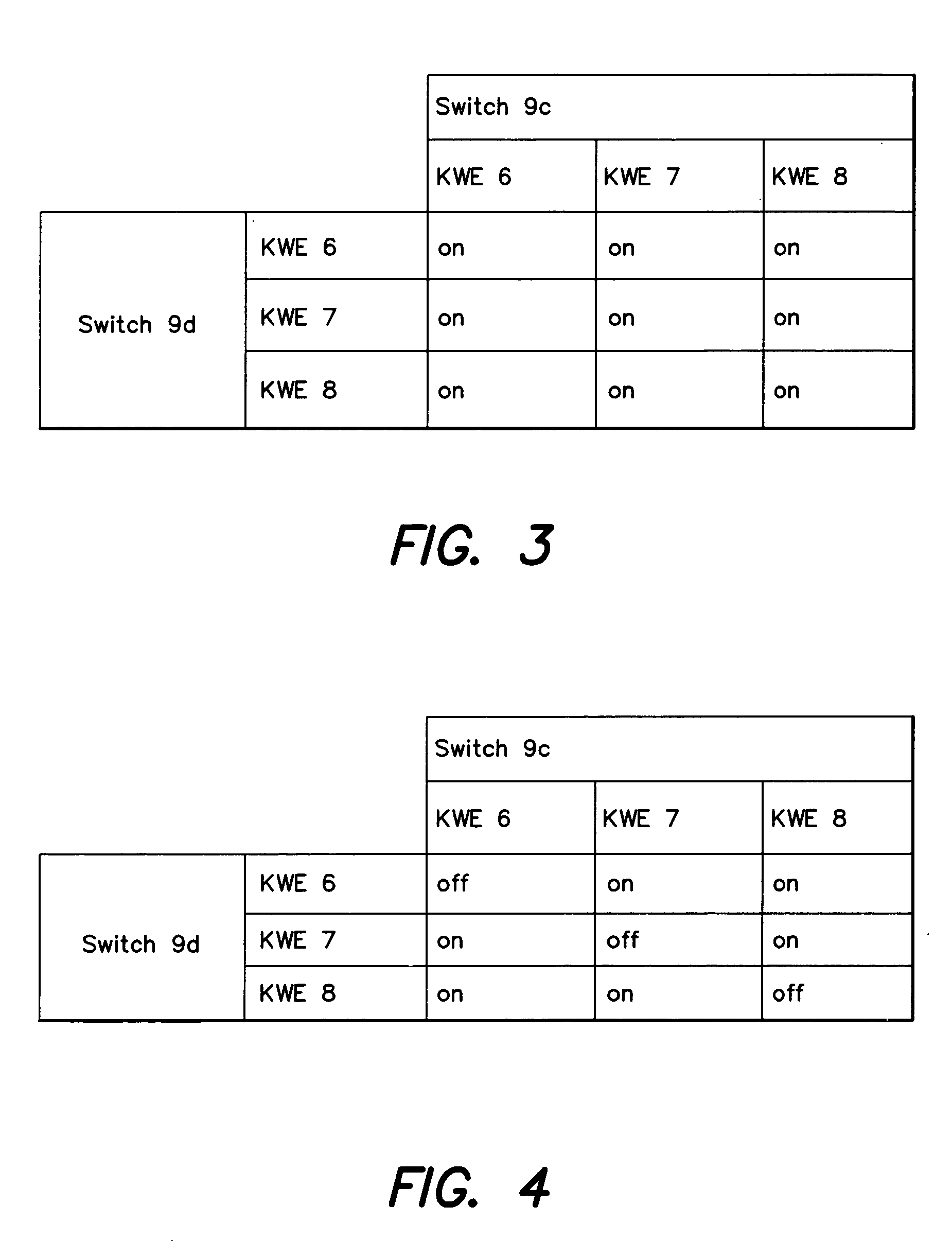Mobile television receiver
a technology for television receivers and receivers, applied in the field of television receivers, can solve the problems of radio and television receivers, transmitters no longer being received at the current set frequency, and the movement of vehicles continuously changing the transmission terrain, etc., to achieve the effect of improving availability
- Summary
- Abstract
- Description
- Claims
- Application Information
AI Technical Summary
Benefits of technology
Problems solved by technology
Method used
Image
Examples
Embodiment Construction
[0018]FIG. 1 is a block diagram illustration of a mobile television receiving device 40. The receiving device 40 includes a plurality of antennas 1–4 that are attached for example at different positions on a motor vehicle. Each of the antennas 1–4 provides an associated received signal to a high-frequency switching device 5, which switches the received signals to a plurality of television channel selection devices 6–8. The switching device 5 can route any one of the received signals provided by the antennas to any one of channel selection devices 6–8. For example, the signal from antenna 1 may be provided to channel selection device 8, the signal from antenna 2 may be provided to the selection device 6, while the signal from the antenna 3 may be provided to the selection device 7. The channel selection devices 6–8 each include a mixer (not shown) that converts the high-frequency signal from the particular switched-in receiving antenna 1–4 into an intermediate frequency (IF) signal b...
PUM
 Login to View More
Login to View More Abstract
Description
Claims
Application Information
 Login to View More
Login to View More - R&D
- Intellectual Property
- Life Sciences
- Materials
- Tech Scout
- Unparalleled Data Quality
- Higher Quality Content
- 60% Fewer Hallucinations
Browse by: Latest US Patents, China's latest patents, Technical Efficacy Thesaurus, Application Domain, Technology Topic, Popular Technical Reports.
© 2025 PatSnap. All rights reserved.Legal|Privacy policy|Modern Slavery Act Transparency Statement|Sitemap|About US| Contact US: help@patsnap.com



